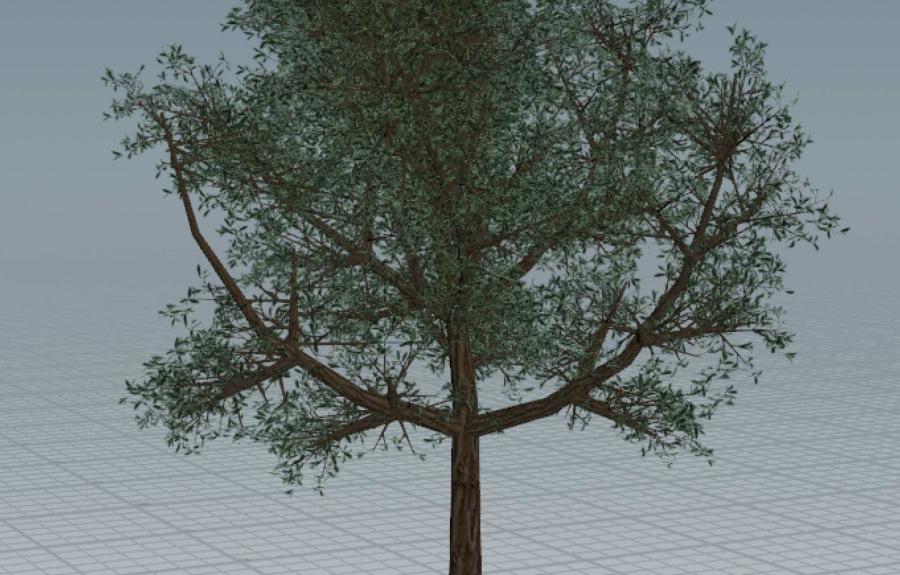Problem Statement
How might we use the physical evidence we have such as pollen records and ancient art to help us visualize plant species that existed in ancient Pompeii.
Through art and writings, we know that plants, especially trees, in the gardens of Pompeii were pruned and shaped in a particular way not seen today. While 3D models of the plant species do exist, these models are of the plants in a modern natural habit. No models exist of the plants as they would have appeared in Pompeii. The size and shape of these plants is intrinsic to the look and the spatial experience of the garden; therefore, it is crucial that the models are accurate.
Background
Physical evidence like root cavities, pollen records, and ancient art provide a picture of Pompeii’s gardens. In collaboration with the team researching at the Casa della Regina Carolina, Pompeii site, we are using the evidence to create a 3D model of the site‘s garden and its plants. Through these models, we hope to better understand how inhabitants of Pompeii used their gardens. These spaces and the activities performed in them can teach us about the ancient worlds’ values, aesthetics, and identities.
Challenges in past attempts
In the 2D Sketches by Huicheng Zhong, an initial sense of scale and space was formed, but the artist was not trained in 3D modeling stopping the process. In the initial 3D models by multiple students, the plant geometry took up too much computer memory. The color pallettes and the art styles were not unified creating a disjointed look. In the 3D plants by Susan Garry, intricate models, like foliage, were both time consuming to create and data heavy.
Research Focus
Pollen Records
Pollen records from garden wall samples give evidence of what genus the plants belonged to. From the list of plants for which there was pollen evidence, we chose to focus mainly on the hazel tree and olive tree.
Root Cavities
Preserved root cavities from trees and shrubs were cast and recorded with the LiDAR scan. This data provides approximations the tree trunks’ circumference, as well as, the spread of the canopy and the spacing of the plants.
Garden Room Paintings
The wall paintings of the Garden Room at the Villa ad Gallinus at Prima Porta are thought to emulate the experience of being in a Roman garden. The paintings display evidence of pruning to thin and miniaturize plants; Many of the same species whose pollen was found are displayed in the paintings. Importantly, the tress were likely pruned to place the fruit and foliage in the cone of vision of those strolling in the garden.
Age
Pompeii was struck by an earthquake 17 years before the eruption of Mount Vesuvius meaning the garden’s plants either must have been younger than 17 years, or more likely, transplanted from a nursery elsewhere. Visitng the Botanical Gardens Although not of the exact species we were modeling, the Cornell Botanical Gardens do have specimens of olive and laurel. We visited to take photos and measurements to aid with texturing and scaling our models.
Manual Sculpting
First we modeled the trees manually in Maya and intended to use instancing for the repeated branches and leaves to reduce geometry and modeling time. However, this process was quite time consuming at our skill level.
Procedural Generation
Eventually, we used the repetitive and geometric structures of plants to our advantage by using a software called Houdini to procedurally generate the tree’s structure. This required us to input parameters like the tree’s height, branching patterns, and trunk diameter. After generating the basic form, we sculpt the model to represent a specific species, almost imitating the way a gardener prunes and shapes a naturally growing tree. Currently, we need to further customize the procedural tree generation program to better mimic natural plant growth. Placement Because architectural modeling like the LiDAR scan of the dig site is done on Rhino, we planned to import the plant models into the Rhino 3D garden model and digitally “plant” them in the root cavities and pots.
Texturing
Texturing, or coloring in the plants, is one of our greatest challenges so far. The plants need to have a unified style in order to look natural and realistic in a garden together.
Milstein Students
References
Gleason, Kathryn L. 2019. “The lost dimension: pruned plants in Roman gardens.” Vegetation History and Archaeobotany (2019) 28:311-325.
Gleason, Kathryn L., Michele A. Palmer, Evan Allen, and Li Bai. 2020.”The digital Topiarius: toward a method of reconstructing the viridarium of the great peristyle of the Villa Arianna at Stabiae.” Studi e ricerche del Parco archeologico di Pompei : 42
Tally-Schumacher, Kaja & Niemeier, Nils. (2016). “Through the Picture Plane: Movement and Transformation in the Garden Room at the Villa ad Gallinas at Prima Porta.” Chronika. 6. 58-71.


